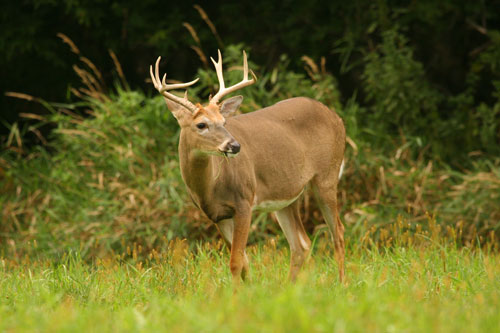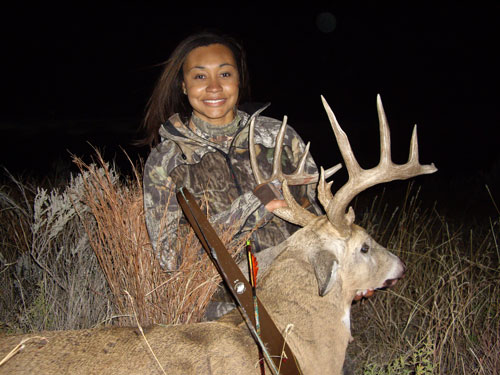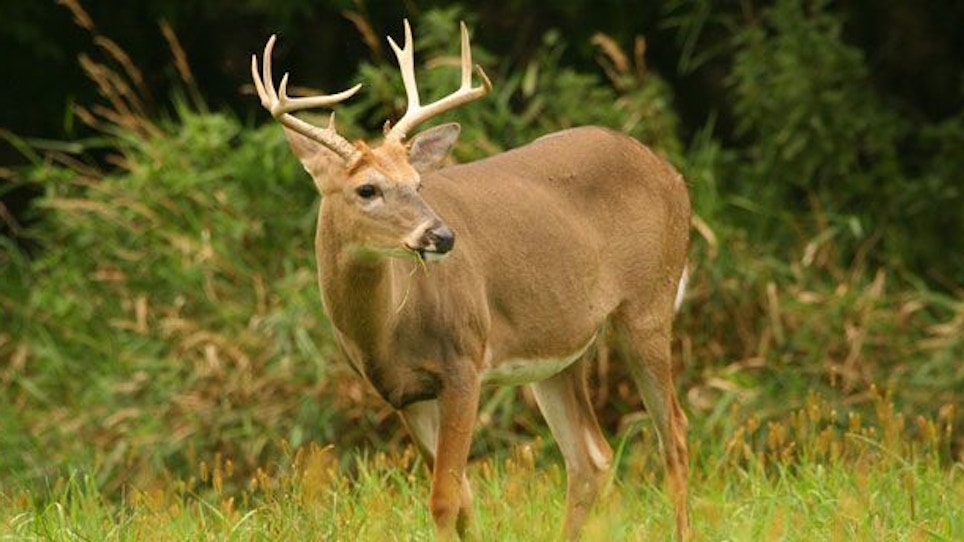 As bow seasons get under way, those who hunt farms or leases debate whether to use one of their buck tags to remove inferior-looking, poorly antlered bucks. Why do hunters think that shooting such “inferior” bucks will help their herds?
As bow seasons get under way, those who hunt farms or leases debate whether to use one of their buck tags to remove inferior-looking, poorly antlered bucks. Why do hunters think that shooting such “inferior” bucks will help their herds?
There are several possible answers. First, for years and years hunters have heard that yearling spike bucks are genetically inferior and will pass those poor genes on to their male progeny. The best thing to do is shoot them, right? Second, there are a ton of television hunting shows feature the culling of “management” bucks. Almost all of those shows were filmed in Texas. The reason you see so many shows where “management” bucks are shot is because really big Texas bucks are worth a lot of money to those private ranches. The people making the television shows can’t afford to pay the $10,000 fees that monster bucks bring, but the ranches are happy to get the publicity via television by letting the hunters take a “management” buck, some of which look pretty big to the average deer hunters from the North.
Does It Work?
The concept of culling bucks is controversial and complex. There are no easy answers, and even in Texas there is a divergence of opinion on whether to cull or not to cull. However, in recent years, several Texas studies have provided some answers. Before we look at them in detail, let’s consider what we do know. In smaller fenced areas (probably 3,000 acres or less), over time you can improve your antler quality by removing management bucks. Some use this data to extrapolate to larger, unfenced tracts, believing that if it works in a small, controlled herd, it will work on larger areas. But that might not be true, and here’s why.
Dr. Mickey Hellickson, who I’ve quoted several times in this column because he does outstanding research, culled inferior bucks for eight years on one large Texas study area, but did not cull on another similar site. He culled all yearling bucks with less than six points and all older bucks with less than nine points. You would think that after doing such removal of management bucks for eight years, antler size would have improved in the culled area. Nope. Didn’t happen.
Dr. Hellickson felt that the main reason culling did not work in larger, unfenced areas was dispersal. We know that yearling bucks disperse in the fall, with as many as 70 percent moving five or more miles. In open farm country, the dispersal distance of yearling bucks can be as much as 12 miles. In more forested areas, five miles is more common.
Of course, via this dispersal your property will be losing some yearling bucks, but those from the neighbors down the road will disperse to your property. That might not equal out though, especially if you’ve spent a lot of time, energy and permits to cull the inferior yearlings, and your neighbors have not. Guess what? You’re getting smaller-antlered yearlings and your neighbors are getting the benefits. They get your better yearlings.
Then there is the simple fact that bucks that are inferior as yearlings might well blossom into fantastic bucks when they get older. Might not be true for all, but it definitely is true for some. Another complicating factor is the fact that there’s no such thing as a “management doe.” Even if the removal of inferior bucks positively affected the antler size of your bucks in years to come, what about the inferior genetics of does?
There is another reason that genetically things are a bit muddled. We now know that all ages of bucks mate does. True, the 3½-year-old bucks do the most breeding, but the young bucks do some. Then there is the problem of deciding what bucks are inferior. Culling a buck that has weird-looking antlers could be a mistake, if that buck has an injured hip or shoulder. Such bucks often develop asymmetrical antlers for one year, then back to normal the next.
What The Studies Say
At the last Southeast Deer Study Group meeting, in San Antonio in February 2010, deer researchers presented four years of data from a new culling study on the Comanche Ranch in South Texas. This study is the largest culling study ever attempted. There were three areas studied. One area was 3,500 acres, and here they culled all yearlings with less than six points, 2-year-old bucks with less than eight points, 3- and 4-year-old bucks with less than nine points, and all bucks more than 5 years of age with a gross score of less than 145. On this site they captured 107 bucks in four years and culled 98 of them. Whew! Of 107 bucks caught in four years, only nine were not culled.
They had a second area that was 18,000 acres. In this area they did not cull any yearlings or any 2-year-old bucks, but they took out all 3- and 4-year-old bucks with less than nine points, and all 5-year and older bucks that scored less than 145 inches. On a third area of 5,000 acres, they did no culling.
 So, on one site there was culling of all aged bucks, and there they culled one buck per 12.6 acres. On a second site they only culled inferior older bucks, and there they culled one buck per 37.9 acres. We won’t have the final results for this 10-year study for six more years, but after four years, there was no change in the antler size of yearling and 2-year-old bucks on either site.
So, on one site there was culling of all aged bucks, and there they culled one buck per 12.6 acres. On a second site they only culled inferior older bucks, and there they culled one buck per 37.9 acres. We won’t have the final results for this 10-year study for six more years, but after four years, there was no change in the antler size of yearling and 2-year-old bucks on either site.
The jury is still out on this huge Comanche Ranch study of a very large and a relatively small fenced area. But even before you think about culling bucks on your area, make sure you have an equal sex ratio, great habitat, good fawn recruitment and a balanced buck age structure — meaning bucks of all ages. That alone is a huge undertaking, but you’d need all those things before attempting to cull bucks. Even then, most biologists conclude that culling can work on small, fenced areas, but does not work on unfenced areas. There are just too many variables that you cannot control.
They suggest you turn your energy and attention to factors that you can control, such as overall age of your buck harvest and creating lots of forage and good habitat. Do that and forget about the question of culling inferior bucks. From what we know today, unless you have a small fenced area, it isn’t worth the effort.






